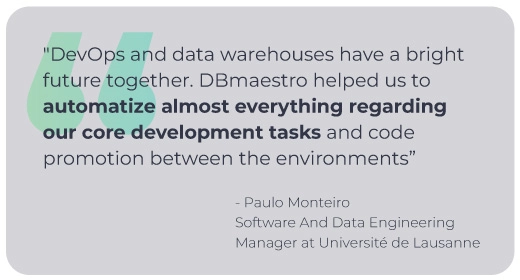The demand for rapid software development and deployment is higher than ever before. Organizations are under constant pressure to deliver new features, enhance performance, and fix bugs quickly. One critical component in achieving these goals is Database Delivery Automation. This approach extends the principles of Continuous Integration and Continuous Delivery (CI/CD) to the database layer, ensuring that database changes are automatically deployed alongside application code. This blog post explores what database delivery automation is, its importance in modern software development, and how it can transform your development processes.
What You Will Learn:
- The definition and components of database delivery automation.
- The integration of DevOps principles with database automation.
- The benefits of automation, including faster deployments, improved reliability, and better collaboration.
- Key tools and resources for implementing database delivery automation.
Understanding Database Delivery Automation
Database delivery automation refers to the practice of automating the deployment of database changes in conjunction with application updates. This involves using specialized tools and processes that manage database scripts, track changes, and ensure consistency across various environments, such as development, testing, and production.
Key Components of Database Delivery Automation
- Version Control: Just like application code, database changes should be tracked using version control systems. This allows teams to manage changes effectively, roll back if necessary, and maintain a history of modifications.
- Automated Testing: Automated tests are crucial for validating database changes. This ensures that new deployments do not introduce errors or negatively impact existing functionality.
- Deployment Automation: This involves using scripts and tools to automatically apply database changes to the target environment. This reduces the risk of human error and speeds up the deployment process.
- Monitoring and Feedback: Continuous monitoring of database performance and user feedback helps teams identify issues early, allowing for quick remediation.
The Role of DevOps in Database Delivery Automation
DevOps is a set of practices that combines software development (Dev) and IT operations (Ops) to shorten the development lifecycle and deliver high-quality software continuously. The integration of DevOps principles with database delivery automation is vital for several reasons:
- Collaboration: DevOps fosters a culture of collaboration between developers and database administrators (DBAs). This collaboration is essential for ensuring that database changes align with application updates.
- Continuous Feedback: By incorporating database delivery automation into the CI/CD pipeline, teams can receive immediate feedback on database changes. This helps identify potential issues early in the development process.
- Efficiency: Automation reduces manual tasks, allowing teams to focus on more strategic initiatives. This leads to faster release cycles and improved productivity.
Importance of Database Delivery Automation in Modern Software Development
As organizations increasingly adopt agile methodologies and DevOps practices, the importance of database delivery automation becomes more pronounced. Here are some key reasons why this approach is essential:
Faster Deployments
One of the most significant advantages of database delivery automation is the acceleration of the deployment process. Manual database deployments can be time-consuming and error-prone. By automating these tasks, teams can significantly reduce the time required to release updates. This speed is crucial in today’s competitive environment, where businesses must respond quickly to market demands and customer feedback.
Consistency and Reliability
Consistency is vital when it comes to database changes. Automated processes ensure that database modifications are applied uniformly across all environments, reducing the risk of discrepancies that can lead to application failures. This reliability is essential for maintaining the stability of applications and ensuring a seamless user experience.
Improved Collaboration
Database delivery automation tools promote better collaboration between development and operations teams. By providing a unified platform for managing database changes, these tools facilitate communication and streamline workflows. This improved collaboration leads to faster resolution of issues and a more cohesive development process.
Reduced Risk
Automation helps mitigate risks associated with database deployments. By automating testing and monitoring, teams can identify potential issues early in the development lifecycle. This proactive approach reduces the likelihood of errors in production environments, ensuring that applications run smoothly and efficiently.
Scalability
As organizations grow, their databases must scale to accommodate increased data and user demands. Database delivery automation supports this scalability by streamlining processes and ensuring that database changes can be deployed quickly and efficiently, regardless of the size or complexity of the database.
Enhanced Security
Automated database deployment processes can also enhance security. By implementing standardized procedures for applying changes, organizations can minimize the risk of unauthorized access or changes. Additionally, automated monitoring can help detect suspicious activity, allowing teams to respond swiftly to potential security threats.
Pro Tip: Implementing source control for database changes is a best practice that provides a single source of truth for all modifications. This makes it easier to track and manage changes over time, ensuring that all team members are aligned.
Key Takeaways
- Database delivery automation is essential for modern software development, enabling faster and more reliable deployments.
- Automation reduces the risk of errors and ensures consistency across environments.
- DevOps principles enhance collaboration and streamline processes, improving overall efficiency.
- Automated testing and monitoring are critical for maintaining application performance and security.
Conclusion
In conclusion, database delivery automation is a critical component of modern software development. By automating the deployment of database changes, organizations can achieve faster releases, improved reliability, and enhanced collaboration between teams. As the demand for rapid software delivery continues to grow, embracing database delivery automation will be essential for organizations looking to stay competitive in the digital landscape.








